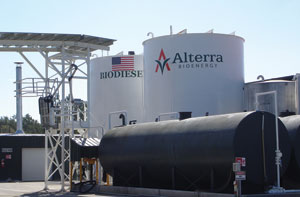December 2007
Featured

Divided We Fall
By Ron Kotrba
Those fighting for one renewable fuel may be wasting energy and creating a no-win situation. Representatives from all sides of the renewable diesel issue speak with Biodiesel Magazine about perceptions shaping the future coexistence of alternative diesel fuels.
The Bigger, the Better?
By Jessica Ebert
According to Biodiesel Magazine's plant construction list, 148 biodiesel plants are operating in the United States with an annual capacity of 1.75 billion gallons per year. The plants produce an average 11.8 MMgy. In contrast, the average size of the 28 plants under construction and three existing plants being expanded is 26 MMgy. As feedstock prices rise, will a trend toward bigger plants continue?

Feedstock Frenzy
By Susanne Retka Schill and Jerry W. Kram
Jatropha and algae show promise as alternative biodiesel feedstocks because they don't compete with crop acres and are purportedly high yielding. The "gold rush" mentality developing around them raises questions about when and if they will be ready for commercial production.

Industry Pins Hopes on Policy
By Anduin Kirkbride McElroy
In 2007, the biodiesel industry identified policy as the key to industry longevity. After months of lobbying and still no resolution from Congress on the Energy Bill and the Farm Bill, the industry will likely need to maintain its focus on policy.
Biodiesel: A Global Perspective
By Bryan Sims
In 2007, Europe and the United States were the leading biodiesel producers. Heading into 2008, Biodiesel Magazine takes a look at which countries are struggling and which show potential.
Research Reveals New Biofuels Link
By Anduin Kirkbride McElroy
Crude glycerin is a low-value byproduct of the growing biodiesel industry. But one company, Glycos Biotechnologies Inc., sees potential for the product as a feedstock for ethanol production.

Biofuels on the Hill
By Jessica Sobolik
U.S. Sen. Byron Dorgan, D-N.D., is part of a growing group in Congress that is interested in and excited about the potential benefits of renewable fuels in the United States. Here, he shares some of his ideas and plans with Biodiesel Magazine.






